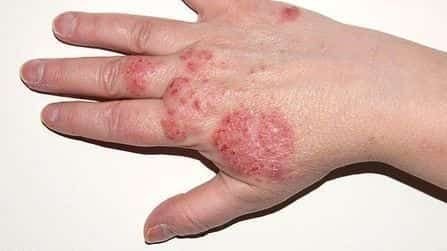Healthy skin is essential for overall well-being, but many people face various skin conditions that can affect appearance, comfort, and confidence. Understanding common skin conditions, their causes, symptoms, and available treatments is key to managing and improving skin health effectively.
In this article, we explore some of the most common skin issues and provide practical advice on how to treat them.
1. Acne
Causes:
Acne occurs when hair follicles become clogged with oil and dead skin cells. Factors such as hormonal changes, stress, diet, and genetics can trigger acne.
Symptoms:
- Whiteheads, blackheads, pimples, or cysts
- Redness and inflammation
- Scarring in severe cases
Effective Treatments:
- Over-the-counter creams containing benzoyl peroxide or salicylic acid
- Prescription medications like topical retinoids or antibiotics
- Maintaining a gentle skincare routine
- Consulting a dermatologist for severe or persistent acne
2. Eczema (Atopic Dermatitis)
Causes:
Eczema is caused by a combination of genetic and environmental factors that make the skin more sensitive and prone to inflammation.
Symptoms:
- Dry, itchy, and red patches of skin
- Cracked or scaly skin
- Blisters or oozing in severe cases
Effective Treatments:
- Moisturizers to keep skin hydrated
- Topical corticosteroids to reduce inflammation
- Avoiding known irritants and allergens
- Using gentle, fragrance-free skincare products
3. Psoriasis
Causes:
Psoriasis is an autoimmune condition where skin cells grow too quickly, leading to thick, scaly patches.
Symptoms:
- Raised, red patches covered with silvery scales
- Itching or soreness
- Commonly affects elbows, knees, scalp, and lower back
Effective Treatments:
- Topical treatments such as corticosteroids and vitamin D analogs
- Phototherapy (light therapy)
- Systemic medications for severe cases
- Regular moisturizing
4. Rosacea
Causes:
Rosacea is a chronic inflammatory skin condition triggered by factors like sun exposure, spicy foods, alcohol, and stress.
Symptoms:
- Facial redness and flushing
- Visible blood vessels
- Bumps or pimples on the face
- Eye irritation in some cases
Effective Treatments:
- Avoiding triggers
- Prescription topical or oral antibiotics
- Laser therapy for visible blood vessels
- Gentle skincare routine
5. Athlete’s Foot (Tinea Pedis)
Causes:
Athlete’s foot is a fungal infection caused by fungi that thrive in warm, moist environments.
Symptoms:
- Itching, burning, and peeling skin on the feet
- Cracks or blisters between toes
- Redness and scaling
Effective Treatments:
- Over-the-counter antifungal creams or sprays
- Keeping feet dry and clean
- Wearing breathable footwear and moisture-wicking socks
- Consulting a doctor if infection worsens
Tips for Healthy Skin Care
- Maintain a consistent skincare routine tailored to your skin type
- Protect your skin from excessive sun exposure with sunscreen
- Stay hydrated and eat a balanced diet rich in vitamins and antioxidants
- Avoid harsh chemicals and irritants
- Seek professional advice for persistent or severe skin problems
When to See a Dermatologist
If you notice unusual changes in your skin, persistent irritation, severe symptoms, or if over-the-counter treatments are not effective, consult a dermatologist. Early diagnosis and treatment can prevent complications and improve outcomes.
Conclusion: Taking Control of Your Skin Health
Understanding common skin conditions and their treatments empowers you to care for your skin effectively. Whether dealing with acne, eczema, psoriasis, or other issues, the right knowledge and medical support can help you achieve healthier, more comfortable skin.
By practicing good skincare habits and seeking timely treatment, you can maintain your skin’s natural glow and protect it for years to come.

